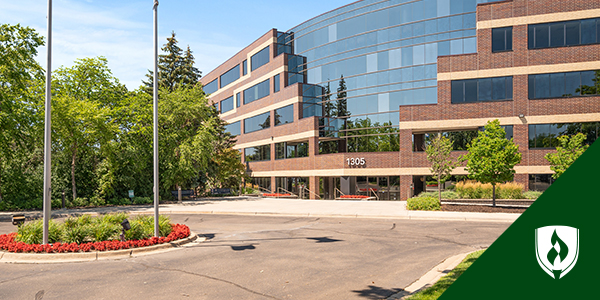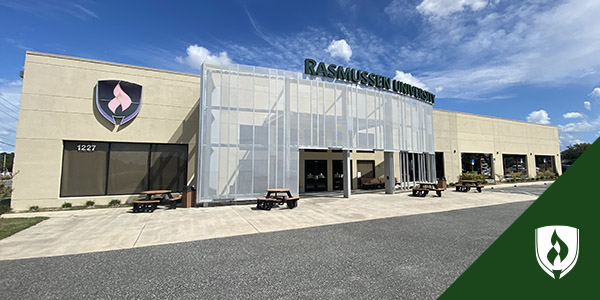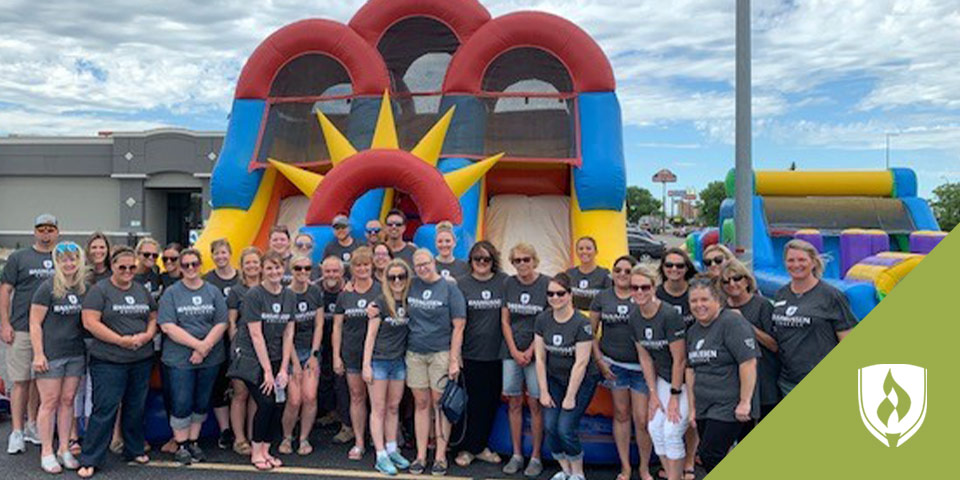Rasmussen College’s Wausau, Wisconsin, campus hosted free meth lab awareness training on April 9. The event was aptly titled "Breaking Bad."
The training was led by Dr. Currie Myers, a retired Kansas sheriff and current dean of the Justice Studies program at Rasmussen College.
The event’s organizer says Myers was the perfect man for the job. “When you hear his wealth of knowledge on the subject, you’re just in awe and you know he’s the real deal,” Wisconsin justice studies coordinator, Shauna Froelich, said.
Froelich says event attendees came from various sources: Rasmussen College students, community members, police officers, counselors and even students from a local technical college all attended. She says the event was timely due to a resurgence of drugs like heroin and crystal meth throughout the state.
Events like this can help students take a peek into their future profession. They came with questions about how to identify a house that contains a meth lab, what the house might smell like and how to get into the law enforcement field.
“It gives the student an idea of the types of work, the potential dangers of our work and understanding the various disciplines within the profession,” Myers said after the event.
Myers covered all the basics during the two-hour training, including how crystal meth is made, its physical and psychological effects and ingredients used in its production. Myers said he spent much of the time focusing on the hazards associated with crystal meth.
“The biggest issue I want people to be aware of is to understand the cause and effect of the drug, Myers said. “There are a lot of ramifications associated with the use and abuse, distribution and manufacture of this drug. I wanted people to really understand the bigger picture and understand there are some inherent dangers.”
Myers knows the dangers of meth firsthand. During his time at the Kansas Bureau of Investigation he was assigned to drug enforcement investigations, money laundering investigations, field investigations and special operations services. He also worked for the United States Drug Enforcement Administration (DEA) for five years.
Those years took their toll. His thyroid was damaged by overexposure to iodine, an important ingredient in one type of meth lab.
“It essentially killed my thyroid, so I have to take the maximum amount of thyroid medication in order to operate normally,” Myers said.
Are you in?
For Myers, who started out as a Kansas State trooper when he was 21, a life in law enforcement just made sense. “Law enforcement is one of those things that’s a calling, not just a profession,” he says.
If you’re feeling that calling, too, be sure to find out more information. Myers’ training showed the theoretical side to law enforcement. Take a peek at what you’ll learn during the practical side in the article “Students Salute New Law Enforcement Training Facility.”
If you weren’t able to catch the meth awareness training at the Wausau campus or the later ones at the Green Bay and Appleton campuses, don’t worry. Although nothing’s confirmed yet, Myers hopes to bring similar training to campuses in Minnesota and North Dakota.
Follow the School of Justice Studies on Facebook to keep up with justice studies-related events!
 For five seasons, you came to know Walter White. You may have sympathized with his plight and marveled at the high school teach who cooked methamphetamine. You were a Breaking Bad fan. But did you realize that meth is a real problem law enforcement officials face every day?
For five seasons, you came to know Walter White. You may have sympathized with his plight and marveled at the high school teach who cooked methamphetamine. You were a Breaking Bad fan. But did you realize that meth is a real problem law enforcement officials face every day?




